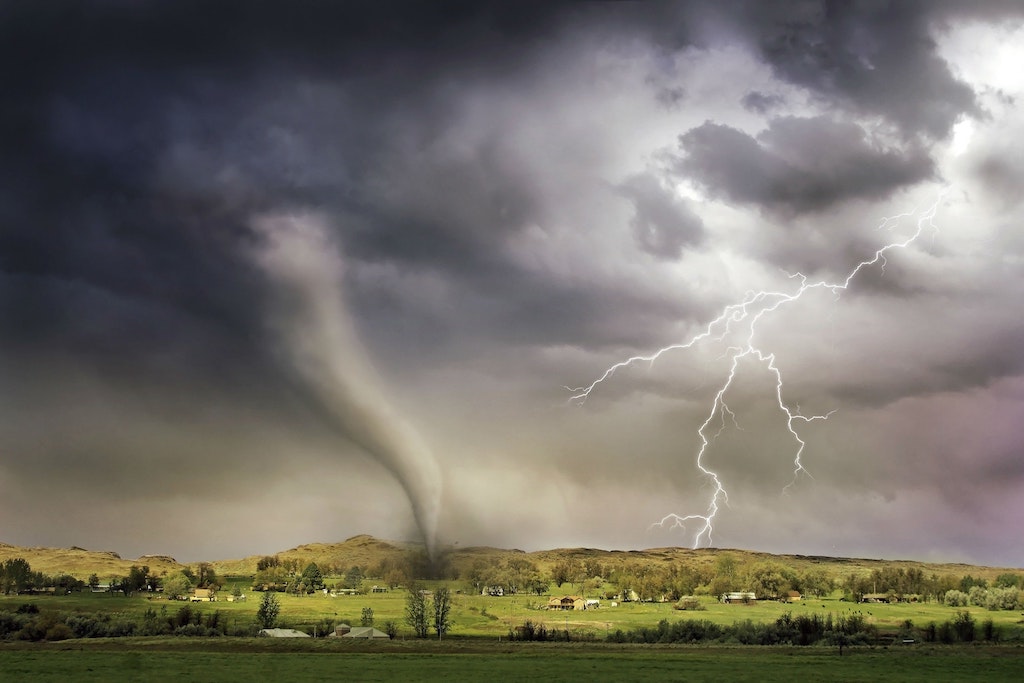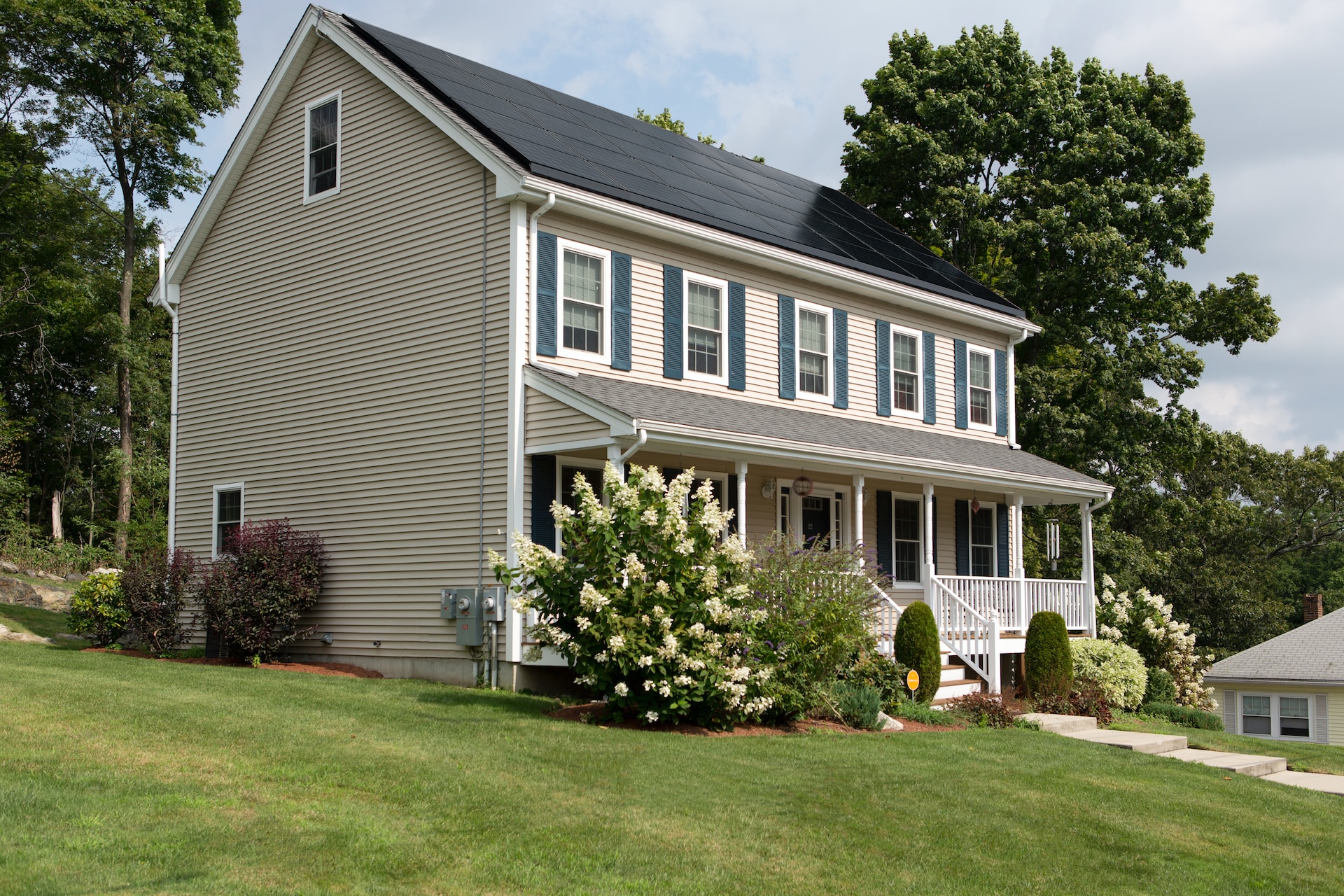North Texas, situated in the heart of Tornado Alley, is no stranger to the destructive power of tornadoes. These violent windstorms can strike with little warning, causing extensive damage to homes and property. Understanding the tornado risk in this region is the first step towards protecting your investments and loved ones. While we can’t prevent tornadoes, we can mitigate their financial impact with the right home insurance coverage. Without it, the financial devastation caused by a tornado can be overwhelming. Here, we will explore tornado insurance in North Texas, from understanding insurance costs to exploring coverage options.
Tornado insurance costs in North Texas
The cost of tornado insurance in North Texas is closely linked to the specific location of your property. This area is commonly referred to as Tornado Alley due to its elevated occurrence of tornadoes compared to other parts of the state. Homes closer to Tornado Alley’s heart typically experience higher insurance premiums.
Average tornado insurance costs in North Texas
While specific insurance premiums can vary widely based on coverage limits, home value, and deductible choices, having a general idea of average costs in North Texas is helpful. On average, homeowners in the region can expect to pay an average of $3,875 annually for home insurance coverage. However, remember that premiums for different homes can be substantially higher or lower.
Insurance Providers and Policy Options
Selecting the right insurance provider and policy is critical in effectively managing your tornado insurance costs. Here’s what you should consider:
- Research multiple providers: In North Texas, you have several insurance providers. It’s advisable to research and obtain quotes from multiple companies. Comparing offerings and prices will help you identify the most competitive options.
- Policy flexibility: Evaluate the flexibility of policies offered by various providers. Some insurers offer customizable policies, allowing you to tailor coverage to your needs. This flexibility can be valuable in balancing coverage and costs.
- Additional coverage options: Some insurance providers offer bundled policies that combine tornado insurance with other coverage, such as home and auto insurance. Bundling can often lead to cost savings.
Cost-effective coverage strategies
Managing the cost of tornado insurance can be a manageable task. By implementing the following strategies, you can maintain coverage without straining your budget:
- Adjust deductibles: Your deductible is the amount you must pay out of pocket before your insurance kicks in. Opting for a higher deductible can reduce your premium costs. However, ensure you can cover the deductible if a tornado strikes.
- Explore discounts: Many insurers offer discounts for safety features and home improvements that reduce tornado risk. Installing impact-resistant roofing, storm shutters, and reinforced doors can make you eligible for discounts. Having a monitored security system or living in a gated community may also lead to savings.
- Maintain a good credit score: In some cases, insurers use credit scores to determine premiums. Maintaining a healthy credit score can help you secure lower insurance rates.
- Review and adjust annually: Don’t let your insurance policy gather dust. Review it annually and adjust your coverage as needed. Changes in your home’s value, improvements, or life circumstances can all affect your insurance needs.
While tornado insurance costs in North Texas can be influenced by geographical factors, thorough research, policy customization, and cost-saving strategies can help homeowners balance comprehensive coverage and affordability.
Assessing tornado-prone areas and risks
When it comes to tornadoes, knowledge is power. Understanding the risk factors and taking proactive measures can make a significant difference in safeguarding your home and loved ones.
Identifying high-risk zones
Tornadoes can strike suddenly and with immense force, so it is optimal to be aware of the risk factors associated with your location. From tornado risk maps that pinpoint areas prone to tornado occurrences to historical data that sheds light on the past frequency and severity of tornadoes, we’ll show you how to access these valuable resources.
- Tornado risk maps: Tornado risk maps are valuable tools for homeowners in tornado-prone areas. These maps, often provided by local authorities or meteorological agencies, highlight regions with a higher likelihood of tornado occurrences. You can determine whether your location falls within a high-risk zone by consulting these maps.
- Historical data: Historical tornado data provides critical insights into the frequency and severity of tornadoes in your area. Examining past tornado occurrences can help you gauge the risk associated with your location. This data is often accessible through government agencies and meteorological websites.
- Consultation with local experts: Contact local meteorologists or emergency management agencies for expert guidance. They can provide current information on tornado risk factors in your area and offer tailored recommendations to enhance your tornado preparedness.
Tornado preparedness and safety measures
Being prepared can make all the difference in the world. Tornadoes are powerful and unpredictable, and having a plan in place can ensure the safety of your family and loved ones. From creating a tornado emergency plan to investing in a tornado shelter and strengthening your home, these steps will help you stay safe and secure when tornadoes strike.
- Tornado emergency plan: Creating a tornado emergency plan is fundamental in ensuring your family’s safety. Your plan should include designated safe locations within your home, an established communication strategy, and a checklist of essential supplies. Regularly practicing tornado drills with your family will ensure everyone knows what to do in case of a tornado warning.
- Tornado shelter: Investing in a tornado shelter can be a lifesaving decision. Storm cellars, reinforced safe rooms, and below-ground bunkers are effective options for protecting your family during a tornado. These shelters provide a secure space to seek refuge when a tornado strikes.
- Strengthening your home: Implementing structural improvements can help reduce the risk of tornado damage to your home. Reinforcing your roof, securing doors and windows, and anchoring heavy objects are all proactive measures that can mitigate damage and improve safety.
- Weather monitoring: Stay informed about weather conditions by accessing weather monitoring tools. A NOAA Weather Radio or weather apps on your smartphone can provide timely tornado warnings, allowing you to take immediate action.
Filing a Tornado Insurance Claim
When a tornado wreaks havoc on your home and belongings in Tornado Alley, specifically North Texas, recovery begins with filing a tornado insurance claim.
Documenting tornado damage: Capturing the details
The first and foremost task after a tornado strikes is to document the damage. This documentation serves as the foundation of your insurance claim.
- Photograph everything: Take clear and comprehensive photographs of all the damage inflicted by the tornado. This includes damage to your home, personal property, and any other structures on your property. Use a camera or smartphone to capture both wide-angle shots and close-ups to provide a comprehensive view.
- Detailed records: Alongside photographs, maintain detailed written records of the damage. Include descriptions of the items affected, their condition before the tornado, and any visible damage or loss.
- Create an inventory: Compile an inventory list of damaged or destroyed items. Include their estimated value and purchase date whenever possible. This inventory will serve as a crucial reference when submitting your claim.
Contacting your insurance provider
Once you have documented the damage, initiating the insurance claims process is essential.
- Prioritize safety: Ensure your and your family’s safety before contacting your insurance provider. Follow any local safety protocols and evacuation orders.
- Contact your insurer: Notify your insurance provider as soon as it’s safe. Prompt reporting is vital, as some policies have strict time limits for filing claims after a disaster. Be ready to provide your policy number and briefly describe the damage.
- Clear communication: During your initial contact, establish clear lines of communication with your insurer. They will guide you through the process and may assign an adjuster to assess the damage in person. Be prepared to answer questions and provide requested documentation promptly.
Claims process and settlement
Understanding the insurance claims process and what to expect can help alleviate some stress during a challenging time.
- Claims evaluation: Your insurance provider will assign an adjuster to evaluate the tornado damage. The adjuster will assess the extent of the damage and verify your claims.
- Documentation submission: Provide all requested documentation promptly and accurately. This includes your photographs, records, and inventory of damaged items.
- Settlement negotiation: After the evaluation, your insurance provider will work with you to reach a fair settlement. This settlement will ideally cover repairing or rebuilding your home and replacing damaged possessions.
- Timely payments: Once the settlement is agreed upon, your insurer will issue payments promptly to facilitate your recovery.
Tornado insurance and home improvements
Tornado Alley and North Texas calls for enhancing the tornado resistance of your home. Here are several tips on how home improvements can help safeguard your property against tornado damage and, in turn, lower your insurance premiums.
Strengthening your home against tornadoes
Investing in home improvements that bolster your property’s tornado resistance is a proactive strategy for homeowners.
- Reinforced roofing: Your roof is one of the most vulnerable areas during a tornado. Investing in a robust and secure roofing system can significantly reduce the risk of damage. Impact-resistant materials and proper installation are crucial aspects of this improvement.
- Impact-resistant windows: Upgrading to impact-resistant windows can mitigate the risk of shattered glass during a tornado. These windows are designed to withstand flying debris, making your home safer for occupants and preserving its structural integrity.
- Secure foundations: A solid foundation is the backbone of any home. Ensuring your foundation is well-maintained and structurally sound is essential in tornado-prone areas. Regular inspections and necessary repairs can enhance the stability of your home during severe storms.
Roofing and structural upgrades
In Tornado Alley and North Texas, where tornadoes are a real threat, focusing on roofing and structural upgrades can yield significant benefits.
- Strong and secure roofing: A well-maintained, securely anchored roof can prevent extensive damage during a tornado. Reinforced roofing materials, such as impact-resistant shingles, can withstand the fury of high winds and flying debris.
- Structural enhancements: Reinforcing walls, particularly in key areas of your home, can make a substantial difference. These structural upgrades improve your property’s overall stability and resistance against tornado forces.
In Tornado Alley and North Texas, informed decisions and proactive measures are the keys to weathering the storm. By staying vigilant, enhancing your home’s resilience, and maintaining a commitment to safety, you’re securing your property and nurturing the peace of mind that comes from knowing you’re prepared to face nature’s fiercest challenges. Stay safe, stay informed, and remember that a tornado-resistant home is a haven of strength in the heart of the storm.




